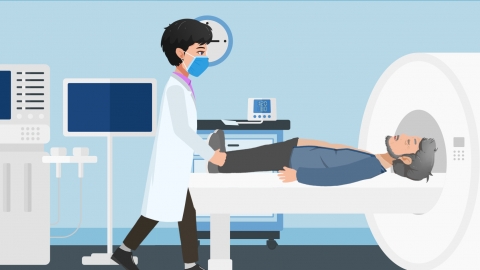What are the typical CT findings of acute cerebral infarction?
Acute cerebral infarction usually refers to acute ischemic stroke. In general, acute cerebral infarction may exhibit characteristic findings on CT imaging, including hypodense lesions, lesion distribution consistent with vascular territories, irregular lesion shapes, specific early signs, and minimal or absent mass effect. Detailed analysis is as follows:

1. Hypodense lesions: This is the most fundamental CT finding in acute cerebral infarction, typically becoming clearly visible around 24 hours after onset. In some cases of large infarcts or those with prolonged symptom duration, decreased density in the affected brain tissue may be observed even earlier. These hypodense areas are usually uniformly or unevenly distributed and stand out in contrast to normal brain tissue, directly reflecting ischemic changes in the infarcted region.
2. Lesion distribution consistent with vascular territories: The extent of the infarct generally corresponds to the blood supply territory of one or more cerebral arteries. For example, infarction in the middle cerebral artery territory often presents as a large hypodense area involving the frontal, temporal, and parietal lobes, while infarction in the posterior cerebral artery territory is predominantly located in the occipital lobe.
3. Irregular lesion shape: Acute cerebral infarcts often have wedge-shaped, fan-shaped, or irregular patchy appearances. The tip of a wedge-shaped lesion usually points toward deep cerebral vascular branches, with the base oriented toward the brain surface—this pattern correlates with the anatomical distribution of cerebral arterial branches.
4. Early specific signs: In hyperacute cerebral infarction (within 6 hours of onset), CT findings may be atypical. However, some patients may show disappearance of sulci and gyral swelling—manifested as shallower or vanished sulci and enlarged gyri with slightly reduced density in the affected area.
5. Minimal or no mass effect: In the early phase of acute cerebral infarction, most lesions do not produce significant mass effect, and brain swelling is usually mild. In cases of large territorial infarction, mild mass effect may develop 3–5 days after onset,表现为 compression and narrowing of adjacent sulci and ventricles; however, midline shift is uncommon.
In clinical practice, CT is a commonly used initial screening tool for acute cerebral infarction. Recognition of these typical imaging features aids in diagnosis, although differentiation from conditions such as intracerebral hemorrhage and brain tumors is essential. For cases with atypical early presentations, further evaluation with magnetic resonance imaging (MRI) is often required to accurately determine the extent and severity of the infarction.




